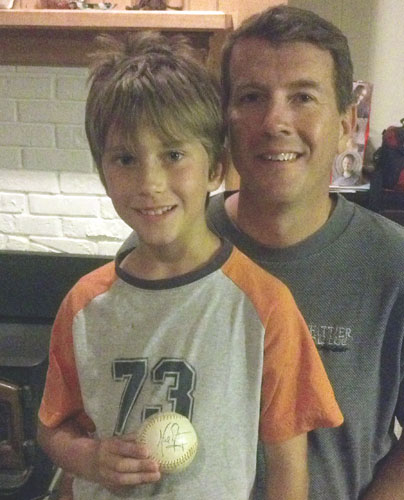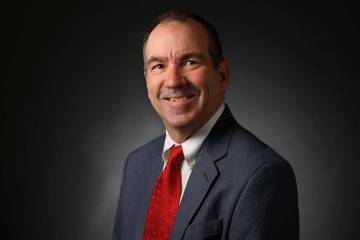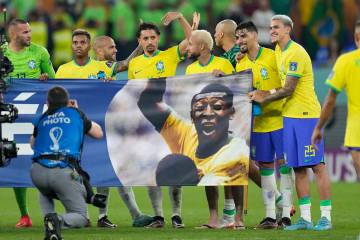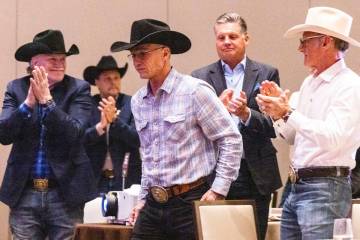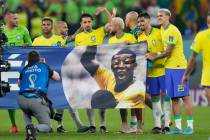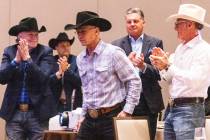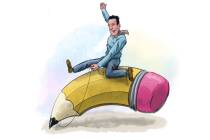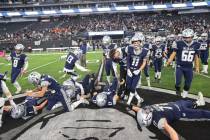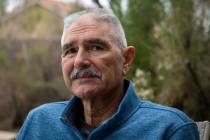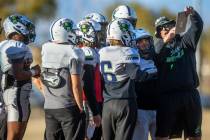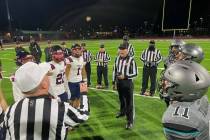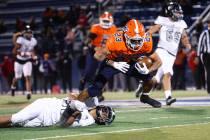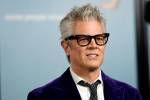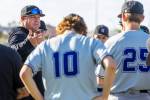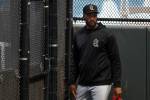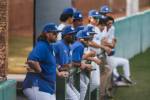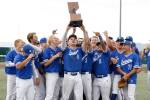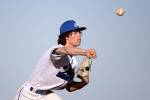Souvenir ball touched with moon dust
In his recent "day-in-the-life" piece of a professional baseball, the Review-Journal's Todd Dewey wrote that even home run balls sometimes wind up being served as batting practice fastballs and have their covers knocked off.
Most baseballs, Dewey's research revealed, die slowly, painfully or, in the case of the Chicago Cubs, in the glove of the opposing shortstop or second baseman, having been popped up with the bases loaded.
But every now and then when baseballs are fouled or tossed into the stands, they "find their way into the hands of youngsters who'll treasure them and give them a loving home."
This is a story about one such baseball. Like many baseballs that become keepsakes, it is autographed.
This particular baseball is signed by one man who was known as "Grump" and by three other men known as Armstrong, Aldrin and Collins.
That would be Neil A. Armstrong, Edwin "Buzz" E. Aldrin Jr. and Michael Collins, the commander, lunar module pilot and command module pilot of Apollo 11.
Armstrong was the first man to walk on the moon.
Aldrin was the second.
There have been only 10 others.
While Armstrong was making a small step for man and a giant leap for mankind - and Aldrin followed him down the steps of the lunar module, thinking of something profound to say - Collins was orbiting the moon all by himself, like the singer Eric Carmen, claiming he never felt lonely. I'm not buying it.
The date was July 20, 1969.
Some 238,855 miles away, the Los Angeles Dodgers and San Francisco Giants played a ballgame at Candlestick Park. Sometime during this ballgame, played on a Sunday afternoon, a baseball was hit into the stands.
The Giants beat the Dodgers, 7-3. Gaylord Perry pitched a complete game, improving his record to 12-7. Willie McCovey, a future Hall of Famer, hit a ball into the stands. He hit his 30th homer of the season in the fourth inning.
Could that have been this particular baseball? I suppose, but the chance seems more remote than the Sea of Tranquility.
Willie Mays, another future Hall of Famer, was in the lineup that day, going 2-for-4 off Claude Osteen.
Bill Sudakis and Len Gabrielson and Hal Lanier and Bob Barton also were in the starting lineups on July 20, 1969. It just as easily could have been a utility man or a weak-hitting shortstop or a backup catcher that was fooled by an off-speed pitch and barely stayed alive by nubbing a foul into the seats beyond first base.
Only this much is known about this baseball: It wound up in the hands of a man known as "Grump" - Fred Barstow, who played football at Notre Dame from 1931 through 1934 alongside Edward Walter "Moose" Krause, who would go on to serve as Notre Dame's athletic director for more than 30 years.
Fred Barstow was the father-in-law of a Las Vegas man named Bob Ashby. Ashby said his father-in-law answered to "Grump" because his grandkids could not pronounce "Gramp."
When the baseball was sent to John Kennedy Ashby, Grump's grandson - Bob Ashby's son, who was named for President Kennedy though Bob Ashby is a Republican - only one signature was on it.
"Dear John," begins the inscription. "This ball was given to me to give to you on 7-20-69. This was the day the astronauts landed on the moon. Grump."
Bob Ashby was the one responsible for adding the signatures of the Apollo 11 crew to the baseball. Ashby was a quality assurance engineer at General Electric, one of NASA's primary contractors. He knew Armstrong, Aldrin and Collins well enough to walk across the street from his office to their offices in Building 4 at Space Center Houston.
John Kennedy Ashby, 46, is a financial liaison for the Amway Corporation who resides in Grand Rapids, Mich., and attended graduate school at Notre Dame on a fellowship after listing Moose Krause as a reference. He didn't become sole owner of the autographed baseball until a few years ago.
"I very reluctantly gave that ball to my son for keeps when he turned about 40," Bob Ashby, 73, said. "I couldn't stand to part with it before then because I was afraid he'd trade it for a dead frog or something."
On Aug. 25, Neil Armstrong died in Cincinnati due to complications from blocked coronary arteries.
The first man to walk on the moon became something of a recluse upon returning to Earth, mostly turning down public appearance requests. He might have done "60 Minutes" once. He did not do "Dancing with the Stars," like Buzz Aldrin. He was a private man.
(So private that when he died, NBC news mistakenly posted on Twitter that "Astronaut Neil Young, first man to walk on moon, dies at age 82." The surviving members of Buffalo Springfield, it can be assumed, immediately were shaken.)
In his 2005 book "In Search of the Men Who Fell to Earth," Andrew Smith wrote that Neil Armstrong had stopped signing his autograph in 1994 when he learned people were selling it for large sums of money.
But thanks to a Las Vegas man named Bob Ashby, and his sense of history and perspective - and him once having been 9 years old himself - no one ever has traded the signature of the first man to walk on the moon for a dead frog.
Las Vegas Review-Journal sports columnist Ron Kantowski can be reached at rkantowski@reviewjournal.com or 702-383-0352. Follow him on Twitter: @ronkantowski.



